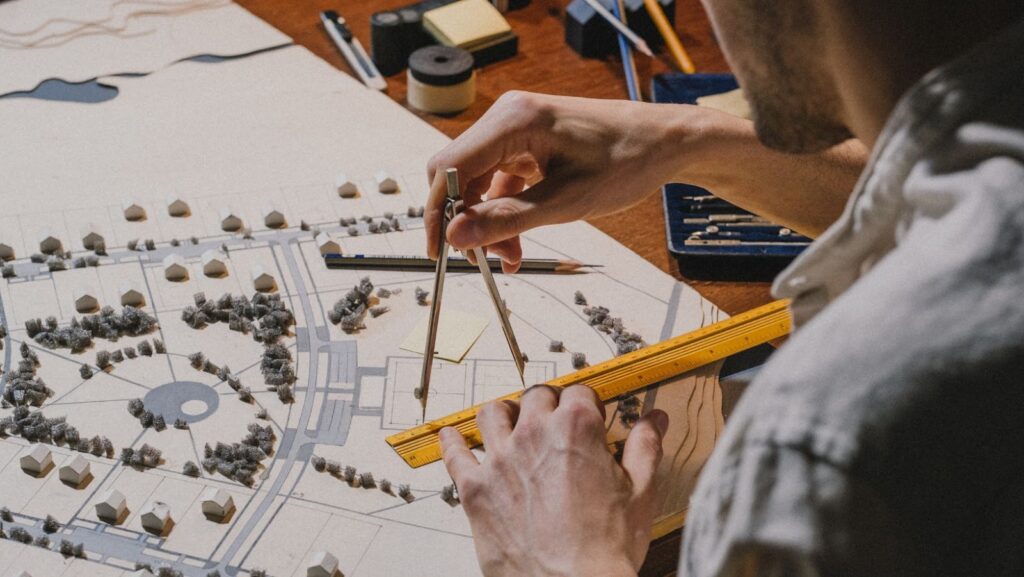In the ever-evolving landscape of modern cities, urban infill architecture emerges as a pivotal strategy for sustainable development. As urban areas grapple with population growth and limited space, this architectural approach seeks to optimize land use by filling in underutilized or vacant plots. It’s not just about maximizing space; it’s about breathing new life into neighborhoods while preserving their unique character. Urban infill projects often transform forgotten corners into vibrant, functional spaces that meet the needs of a growing urban populace. By focusing on compact, efficient designs, these projects aim to reduce urban sprawl and promote walkability. As cities strive to balance density with livability, urban infill architecture stands at the forefront, offering innovative solutions that benefit both the environment and the community. With its focus on sustainability and revitalization, urban infill is reshaping how we think about city living.
Urban Infill Architecture
Urban infill architecture involves transforming underutilized plots into dynamic urban spaces. This method addresses the challenges of urban expansion by emphasizing high-density development within existing city boundaries. It maximizes land use efficiency by repurposing vacant sites. Examples include converting old industrial areas into residential complexes or community hubs. This adaptation of existing infrastructure not only optimizes space but also preserves historical elements when possible. Design principles in urban infill prioritize sustainability and efficiency. Architects often employ innovative construction materials and energy-efficient technologies to minimize the environmental footprint. Green roofs, solar panels, and prefabricated building components are elements often incorporated. These considerations significantly contribute to reducing carbon emissions and resource consumption. Community integration plays a crucial role in successful urban infill projects. By engaging local stakeholders, architects and developers create designs that reflect community needs and desires. Projects often include mixed-use developments that combine residential, commercial, and recreational spaces, promoting a vibrant urban lifestyle. Public transportation accessibility and walkability are essential components. Such features foster connectivity and ease of movement within the city. Urban infill architecture serves as a catalyst for urban revitalization. By focusing on neglected areas, cities can stimulate economic growth and improve residents’ quality of life. These projects attract businesses and individuals seeking vibrant urban experiences. The upgraded infrastructure and enhanced aesthetics draw both locals and visitors, contributing to the area’s economic resurgence.
Key Elements of Urban Infill Design
Urban infill design embraces core principles that enhance sustainability and efficient space utilization, aligning tightly with evolving urban needs. Sustainability is integral to urban infill design. Architects use sustainable materials, like recycled steel and bamboo, to minimize environmental impact. Energy-efficient technologies, such as LED lighting and high-performance insulation, further enhance energy savings. Incorporating advanced systems like rainwater harvesting and graywater recycling optimizes resource use, reducing infrastructure stress. Urban infill projects frequently integrate green spaces, which improve air quality and provide natural habitats within urban settings. Maximizing available space defines urban infill design, prompting innovative solutions. Designers often blend functionality with aesthetics, transforming small plots into multipurpose areas. Adaptive reuse of existing structures, like converting warehouses into mixed-use complexes, exemplifies inventive space application. Vertical development strategies, including skyscrapers with mixed-use floors, effectively address land scarcity while promoting urban density. These elements combine to create vibrant urban zones that cater to diverse community needs.
Benefits of Urban Infill Architecture
Urban infill architecture offers numerous advantages by transforming underutilized spaces into productive urban environments. It focuses on efficiency, sustainability, and community engagement. Urban infill architecture breathes new life into neglected neighborhoods. By repurposing vacant lots and outdated structures, it transforms these areas into thriving communities. Projects often include mixed-use developments that combine residential, commercial, and public spaces. This leads to increased foot traffic, improved safety, and enhanced aesthetic appeal. Such revitalization fosters local pride and attracts new residents who seek vibrant urban living. Urban infill projects provide significant economic benefits. Redeveloping existing spaces often proves more cost-effective than constructing new developments on the city’s outskirts. These projects create jobs during the planning, design, and construction phases. Increased population density in revitalized areas boosts local businesses and services, creating economic ripple effects. The enhanced infrastructure attracts investment, further driving economic growth and contributing to a sustainable urban economy.

